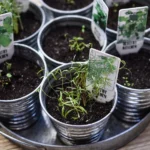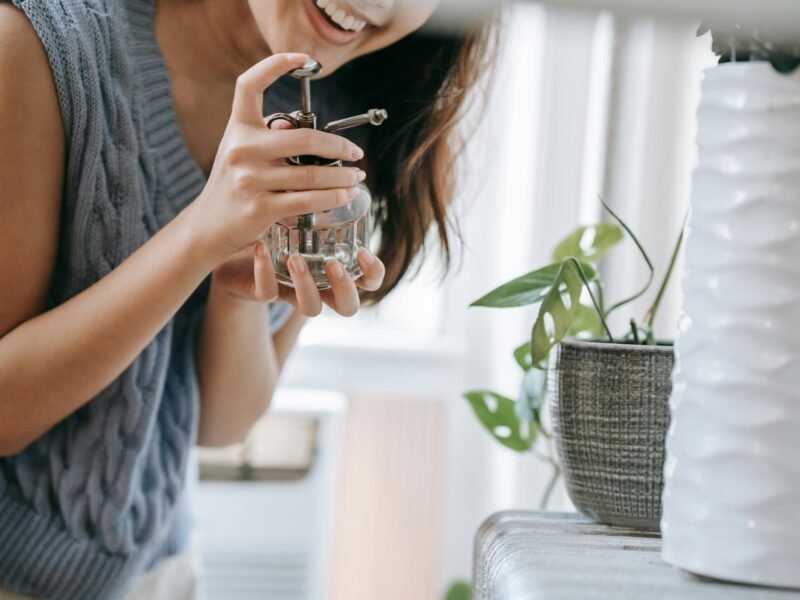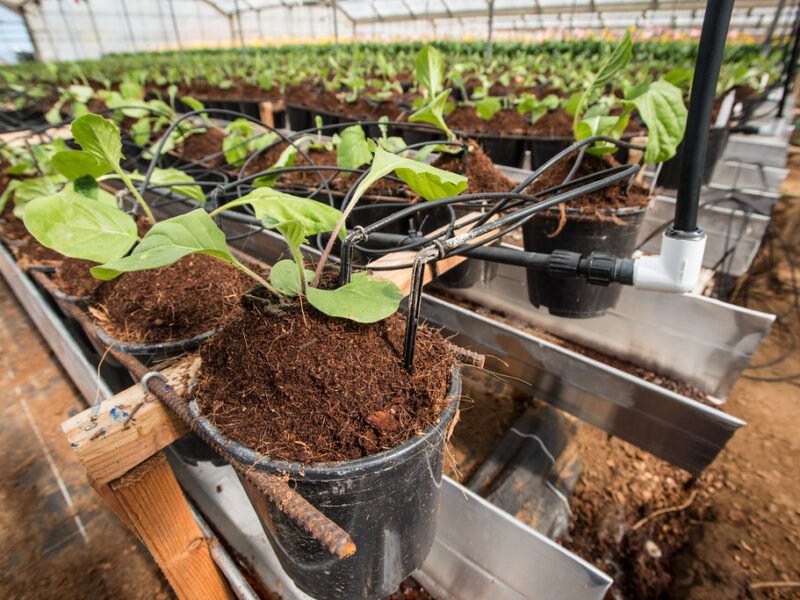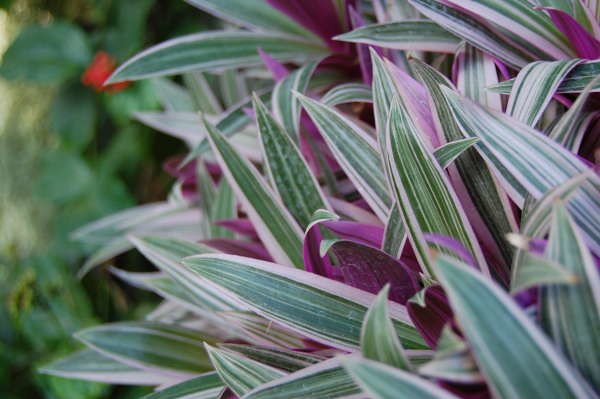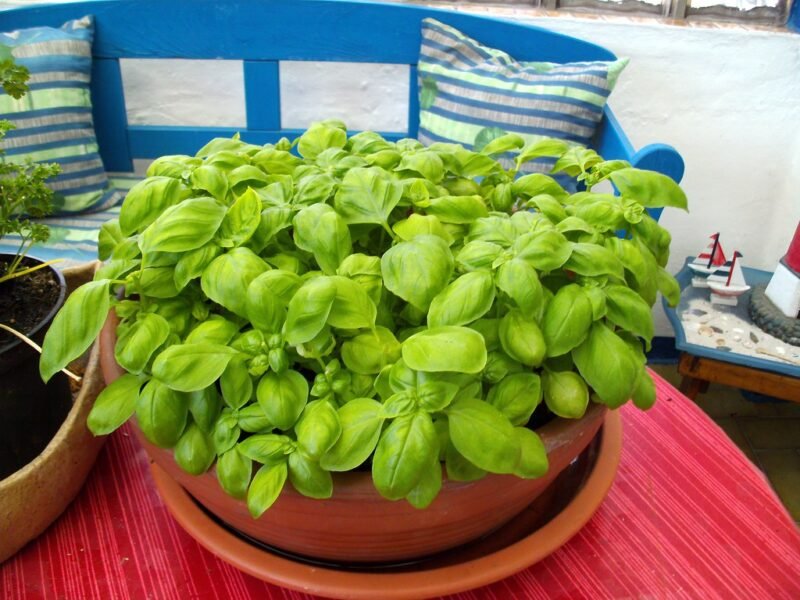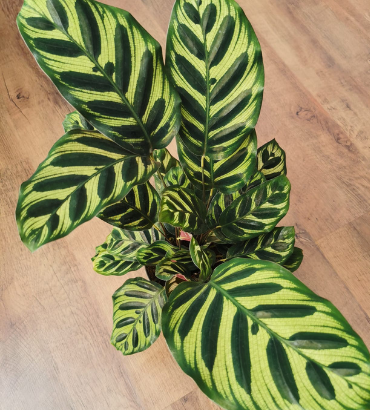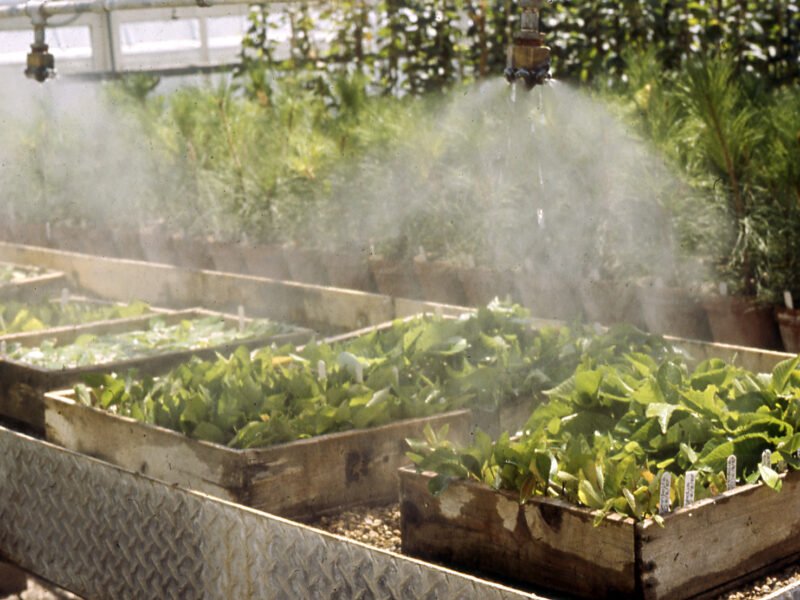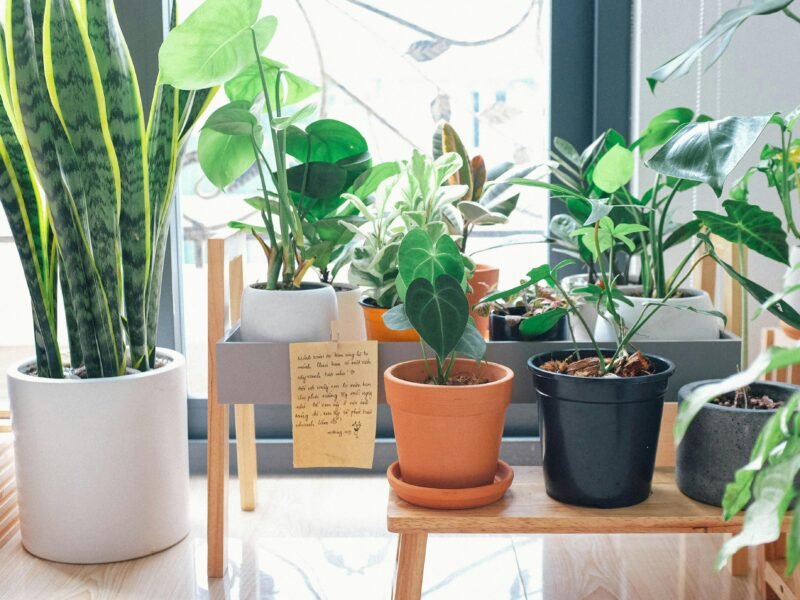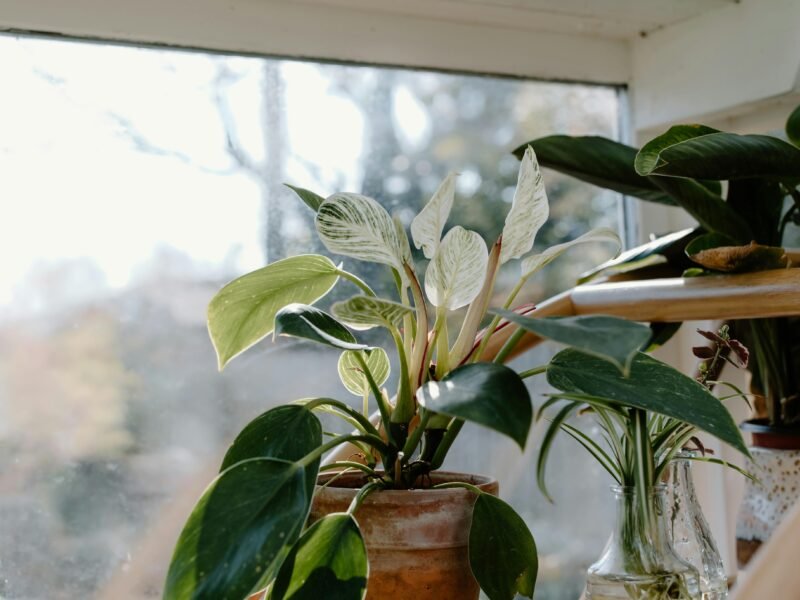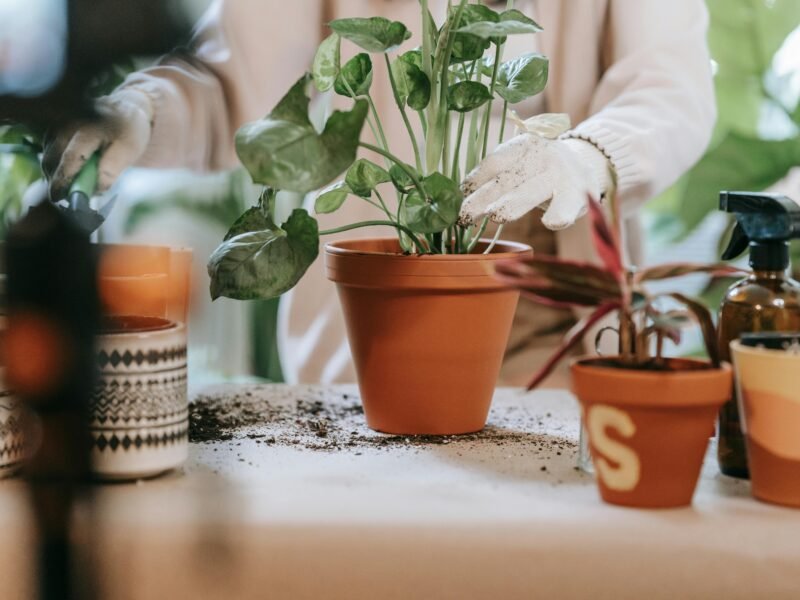How To Create a Window Herb Garden

For any time of year, a window herb garden is the perfect way to have fresh, fragrant herbs right in your home. But all you need is a bit of sun and a shred of space to grow your itty bitty garden on your windowsill. Additionally, it provides you with a fresh supply of herbs for cooking and herbal remedies whenever you need some greenery indoors. Ideal for apartment dwellers or people with limited outdoor space, a window herb garden provides an easy, green way to grow herbs such as basil, rosemary, and mint.
Putting together a herb garden is simple and satisfying, no matter if you are a gardening expert or have no experience at all. By using different containers and giving them proper sunlight and water the right way, you are on your way to a beautifully delicious farm that breathes fragrance. Not to mention, keeping fresh herbs within reach can elevate your cooking experience and bring a little something extra to every dish.
Table of Contents
ToggleBenefits of Window Herb Garden
Before we dive into the how-to section, let’s first discuss some significant benefits of growing a herb garden.
Herbs Handy: Having a window herb garden means you can easily nip into the kitchen and pick fresh herbs at any time, for cooking, teas, or as garnish. Avoid rushing back to the store to grab a few sprigs of basil or parsley.
Herb gardens add more green elements to your kitchen or living area, which is simply refreshing.
More Taste & Aroma: Fresh herbs taste so much better than dry herbs, this enhances your dish with way more flavor notes and aromas.
Save Money: If you eat a lot of fresh herbs as seasoning, growing your herb garden will save you money over time.
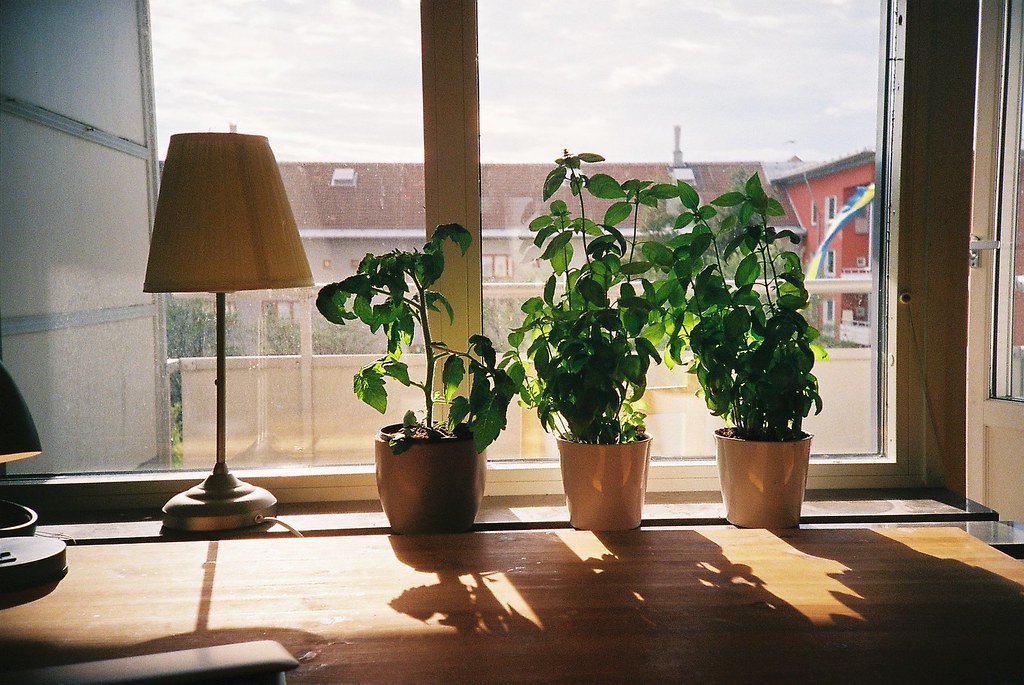
Perfect Place for Your Window Herb Garden
Selecting the right window to start your herb garden next, since most herbs require a lot of sun to grow, you will need to find a window that gets at least 6 hours of direct sunlight per day. In general, an ideal arrangement includes a south-facing window in most climates, as southern exposure usually provides the best and most steady sunlight.
No worries; if your home lacks an ideal sunny window, then grow lights are a wonderful solution. These lights work in the same way natural sunlight does, so when you have them on, your herbs will be getting licht. Place your herbs closest to the window to maximize the amount of light they receive.
Pick Herbs for Window Herb Garden
Of course, not all herbs are going to be the best indoor plants, and that should go without saying, but you also need to consider what grows and how you will most enjoy their benefits. Here are some of the best herbs to consider:
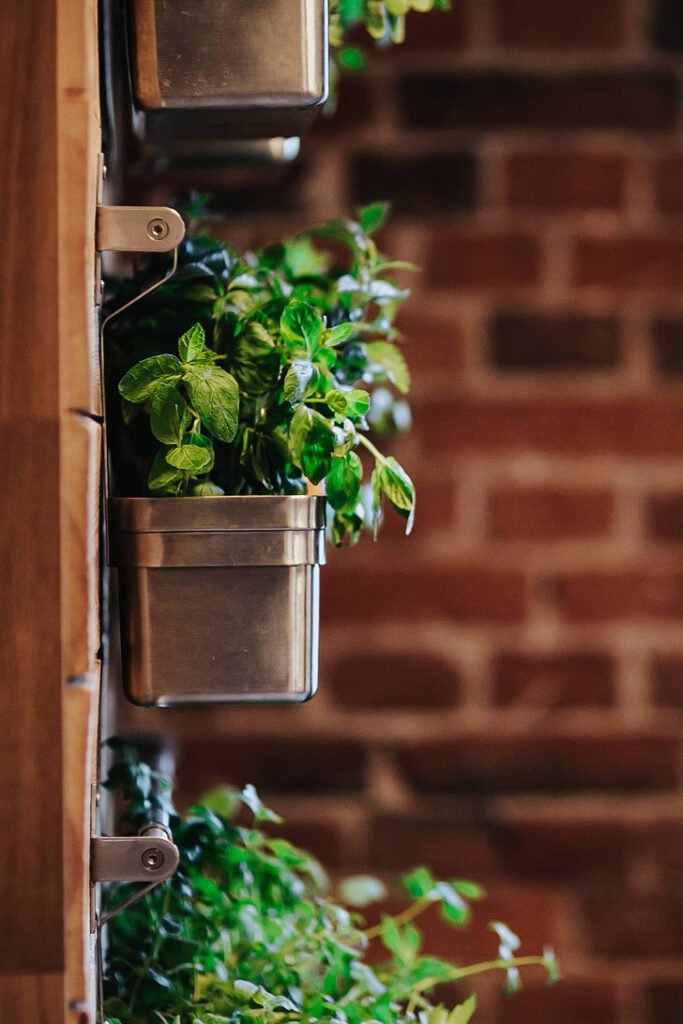
Basil: Basil is another culinary herb that is ideal for growing in sunny, warm locations. You should keep the soil wet, and it requires a minimum of 6–8 hours of sunlight.
Parsley: Indoors, there are many varieties of parsley. It is native to Brazil, enjoys clear light without full sun, and can be used indoors.
Mint: It is a perennial plant that can grow aggressively indoors. Due to its aggressiveness, keep this plant in a container.
Chives: One of the top herbs for gardening indoors, chives are compact and versatile. They are a sun-loving plant that you can care for.
Cilantro: This can be a bit fickle, but it is cool and bright, so if you can find an open window that opens without setting out the plant too far or getting overwatered, it might be a suitable spot.
Thyme: Thyme is another herb that thrives on neglect and doesn’t require a lot of extra H2O. It is ideal for a window herb garden bathed in sunlight.
Oregano: This herb thrives in relatively warm, full-sun locations and doesn’t require daily watering, making it an excellent choice for indoor environments.
Choose 2–3 herbs that you use regularly in cooking. Once you become comfortable with your window herb garden, you can expand it and experiment with growing other species.
Choosing the Appropriate Containers
Herb garden containers are essential for storing attractive herbs without causing them to rot. Use pots with ample drainage holes for any excess water to seep out, as over-watering is the bane of herbs.
Here are a few types of containers that you can use:
Clay cocks: This traditional type of container has good air permeability and can reduce the water content of the bottom.
Plastic pots: They are light, cheap, and simple to move around, but they don’t supply water from evaporation because they’re also not porous like terracotta. Read more about pots here.
Ceramic pots: These are the decorative options to choose from if you want your herb garden to fit into your room rather than challenge its aesthetic.
Such containers need to have depths of 6–8 inches to house the plants’ roots. Or, you may opt for a large container that will house several herbs; however, part of the benefit of growing common sage in pots is to prevent overcrowding and make them easier to care for.
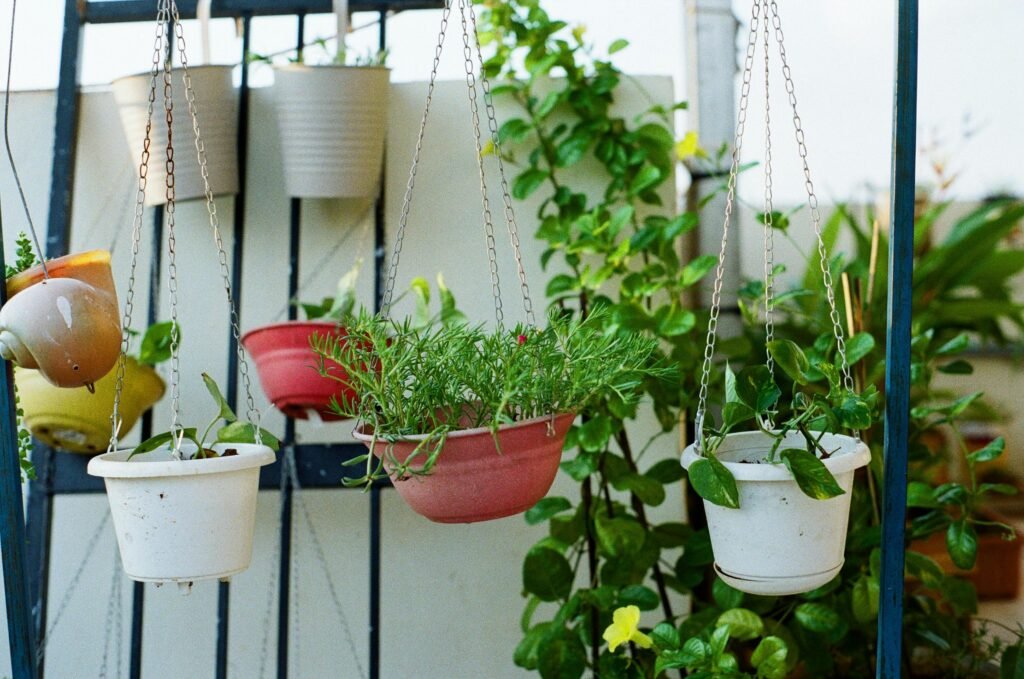
Preparing the Soil
Have to use high-quality soil. The quality of the soil you use is going to be key for a successful herb garden. Select a well-draining potting mix suitable for indoor plants or your preferred herb. Avoid using garden soil because it is too heavy and holds water, leading to root rot and disease.
If your container bottom has drainage holes, you can also add a layer of small stones or gravel to help with water drainage. This helps make sure that water can drain away and air can get around those roots.
How to Plant Herbs and Tips for Care
With your herbs, containers, and soil prepared, it is now time to plant your herb garden. Follow these steps to plant and care for your Catharanthus plants.
Planting the Seeds/Seedlings: You can either grow from seeds or seedlings and follow depth and space instructions as per the Seed Package. If you are transplanting seedlings, gently loosen the roots before planting. Top off with soil, leaving 1 inch of water at the top of the container.
Water: Herbs typically do well with soil that is moist but not waterlogged. Water your herbs only when the top inch of soil is completely dry to the touch. Only water your crassula when the soil is dry; never allow the plant to sit in soggy soil, or it will most likely end up with root rot. Herbs need different amounts of water, so get to know each one in your window herb garden.
Feeding Your Herbs: Feed your herbs with a balanced liquid fertilizer or organic compost. This will provide them with the proper nutrients to grow rich and tasty. Take care not to overfertilize (which can result in weak or spindly growth).
Regular pruning can improve your herbs’ growth and stave off legginess. When needed, harvest the herbs by pinching off fresh leaves at the top of the plant, which will help new growth. It’s also when most herbs’ oils are at their peak, which means you get the best flavors out of them.
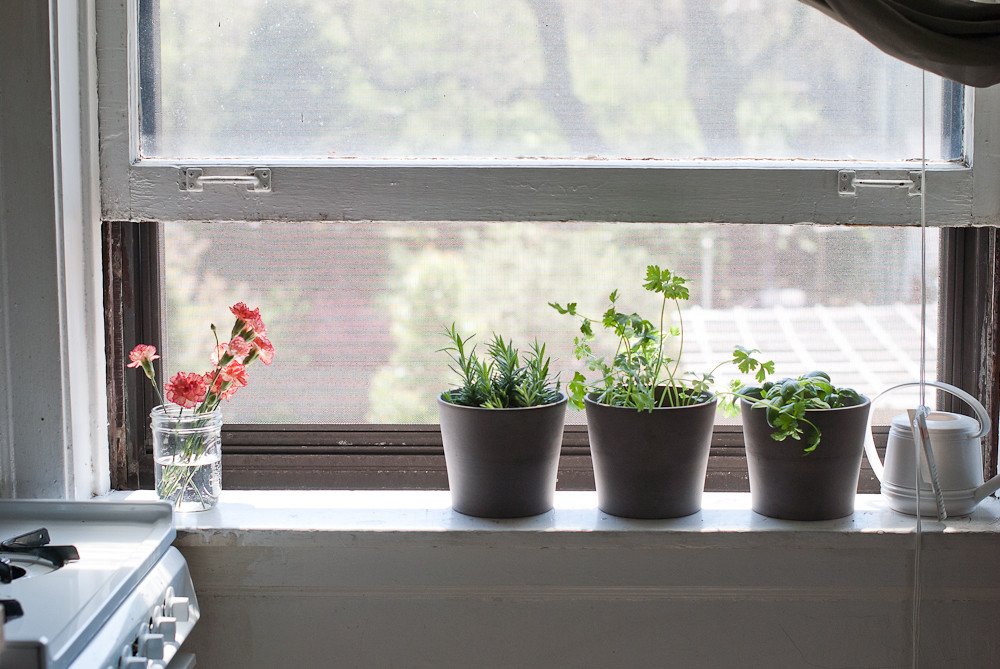
Pest Control and Troubleshooting
Even in a window herb garden, you might find aphids or whiteflies. To avoid these issues, you should always check on your plants and look for any signs of pests or insect control alternatives, such as neem oil or even homemade remedies.
Should herbs be sitting all cramped in your kitchen window, they will not gain any benefit, and you are wasting time harvesting the leaves. Bad A/C, If the air unit doesn’t properly circulate air, water accumulation can lead to mold and mildew.
Enjoy Your Fresh Herbs
Once your window herb garden begins to thrive, the possibilities are endless! Fresh herbs can help take your meals to the next level. You can brew up a herbal cup of tea or even try making some simple homemade herb-infused oils. We should have covered it by now, if not, shame on us! However, having fresh herbs at your disposal for cooking and immersing yourself in the limitless blends of flavors, scents, and health advantages (not to mention our herbal medication similar to ibuprofen) surpasses the dried ones from last month’s grocery shop. You may like to know more about herb gardens here.
Final Thoughts
Building a window herb garden is a breeze and provides year-round, fresh herbs from your very own home. Create a happy window herb garden. The perfect location, the right herbs, and good maintenance If you select an ideal location with proper herbs and the right care, your window herb garden can flourish, providing fresh flavors for all your cooking recipes or ornamental plants. If you are an experienced gardener or new to it, preparing a window herb garden is one of the best things you can do to add both beauty and utility to nature indoors.
Most Viewed
Latest Articles










